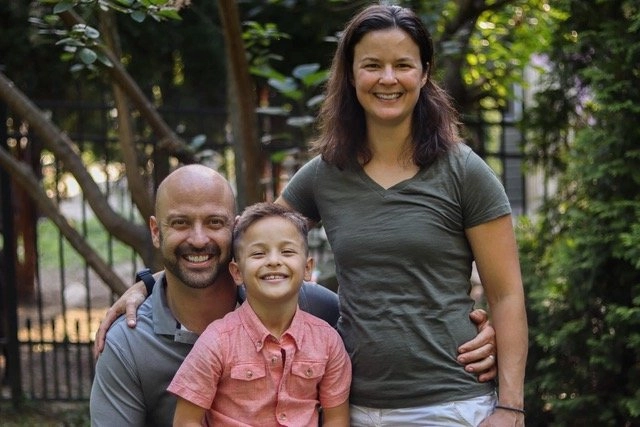Chris Kaag is a warrior. He grew up in Reading, Pennsylvania and moved to Canton, Ohio and went to Penn State Berks Campus, majoring in Business and Marketing. Following in the footsteps of his grandpa, uncle, and his father, he joined the Marines when he was 17. He credits the Marines for defining what he is now able to do. Just weeks after his 21st birthday, he noticed his feet were dragging while out on a run. His doctor rushed him back to the US where he spent nine weeks at Walter Reed National Military Medical Cenrter and was diagnosed with Adrenomyeloneuropathy (AMN) – an adult form of adrenoleukodystrophy (ALD) that primarily affects the spinal cord, which is usually characterized by weakness and stiffness in the legs. AMN is a genetic condition that was accelerated from a head injury that Kaag sustained while in the Marine Corps.

As a Marine, he now fights to keep people with disabilities active, physically and mentally.
Kaag is the founder and CEO of the IM ABLE Foundation, located in Wyomissing, Pennsylvania. When he was young, he saw a doctor at a children’s hospital, and it was there that he also saw children who were on breathing and feeding tubes and confined to beds. This had a huge impact on Chris. He was fortunate to have had a typical childhood and to achieve his dream of becoming a Marine. When he started the IM Able Foundation, he had the kids who were in the children’s hospital in mind – “to take those obstacles out of the way in order to provide kids with a ‘typical’ childhood so they could do things like riding bikes.” The mission of the IM ABLE Foundation is simple. We remove obstacles that keep people with challenges on the sidelines, providing them access to programs and equipment tailored to their needs and a community of all abilities to support them. The IM ABLE Foundation has helped so many people since its inception with many different kinds of athletic events, triathlon, mountain bike rides, hikes, weightlifting, and more. Kaag feels the appeal comes from the way all of the participants are treated. Kaag says, “I don’t treat them as different, but instead create a team environment where everyone can thrive together despite their differences.” He goes on to say that, “Creating a social experience is just as important as the physical one. [Some of the people who come] have noticeable differences such as Down syndrome or cerebral palsy and may not have many friends. But, building friendships is the type of atmosphere IM Able builds with all who participate. Plus, it’s also rewarding for our volunteers who create lasting friendships with these young people!”
It’s obvious that Kaag is no stranger to challenges, as a veteran and as a civilian. And many veterans continue to face challenges long after their service, including Post Traumatic Stress Disorder (PTSD), dealing with the loss of life of close friends, and especially getting acclimated back into civilian life. It can also be difficult for someone like Chris who now has a physical difference. Many try to “feel” or “be” like they were before they suffered an injury or disability. The loss of independence can be difficult to accept. Veterans in the United States are fortunate that the government has programs and services in place to help with their needs after services, especially when they are injured or suffer a disability. While there is much room for improvement in these services, many countries provide little or no support to veterans once they have served.
Kaag also knows you cannot do it all alone, so sometimes you need to collaborate. The IM ABLE Foundation has collaborated with other organizations in the past on events and also started “Operation Lead from the Front” where IM ABLE teams vets with their adaptive population. The integration forces attention to the adaptive population and not the challenges vets themselves may be facing. Many veterans return from service with burns, paralysis, loss of limbs, traumatic
brain injuries (TBI), or other forms of trauma.
The IM ABLE Foundation has come a long way. Once providing adaptive equipment grants to now having adaptive programming and more expansive ways to provide opportunities for people of all abilities to thrive. While the Foundation can really use your financial support to help all of these programs continue to benefit the veterans and adaptive participants served, Kaag feels the best way to support the Foundation is to get involved and volunteer. “We like to have emotionally connected donors.”
As you can probably guess, Chris and his family are very active.
He, along with wife, Gretchen, and 8 year old son, Carter, can usually be found working out, mountain biking, taking a walk, or some other sport. As life returns to normal, Chris and his family looks forward to interacting with the wonderful community where he lives and has shown its support.
For more information about the IM Able Foundation, or to make a donation, go to
www.imablefoundation.org
